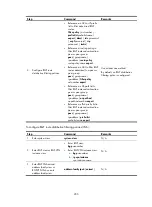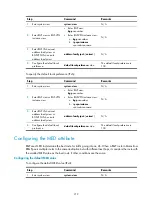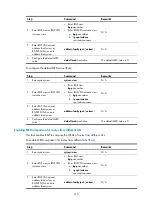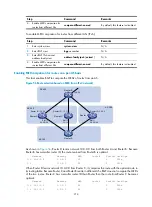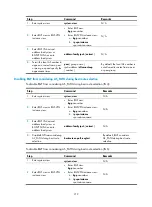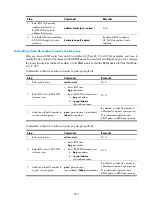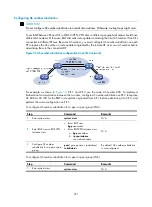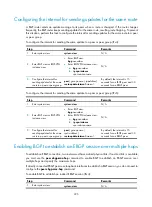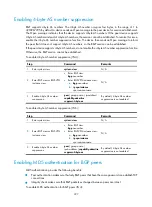
216
not belong to the confederation, BGP does not compare it with other routes. As a result, the first route
becomes the optimal route.
To enable MED comparison for routes from confederation peers (IPv4):
Step Command
Remarks
1.
Enter system view.
system-view
N/A
2.
Enter BGP view or BGP-VPN
instance view.
•
Enter BGP view:
bgp
as-number
•
Enter BGP-VPN instance view:
a.
bgp
as-number
b.
ip vpn-instance
vpn-instance-name
N/A
3.
Enter BGP IPv4 unicast
address family view or
BGP-VPN IPv4 unicast
address family view.
address-family ipv4
[
unicast
] N/A
4.
Enable MED comparison for
routes from confederation
peers.
bestroute med-confederation
By default, this feature is disabled.
To enable MED comparison for routes from confederation peers (IPv6):
Step Command
Remarks
1.
Enter system view.
system-view
N/A
2.
Enter BGP view.
bgp
as-number
N/A
3.
Enter BGP IPv6 unicast
address family view.
address-family ipv6
[
unicast
] N/A
4.
Enable MED comparison for
routes from confederation
peers.
bestroute med-confederation
By default, this feature is disabled.
Configuring the NEXT_HOP attribute
By default, a BGP router does not set itself as the next hop for routes advertised to an IBGP peer or peer
group. In some cases, however, you must configure the advertising router as the next hop to make sure
the BGP peer can find the correct next hop.
For example, as shown in
, Router A and Router B establish an EBGP neighbor relationship, and
Router B and Router C establish an IBGP neighbor relationship. If Router C has no route destined for IP
address 1.1.1.1/24, you must configure Router B to set itself 3.1.1.1/24 as the next hop for the network
2.1.1.1/24 advertised to Router C.




